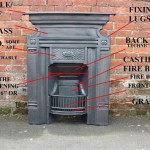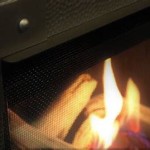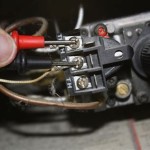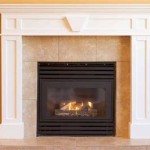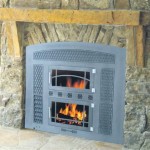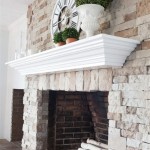Ventless Gas Fireplace Insert Dimensions: A Comprehensive Guide
Ventless gas fireplace inserts offer an attractive and relatively convenient alternative to traditional wood-burning fireplaces or vented gas fireplace systems. They function without a chimney or venting system, making them easier to install in existing homes or spaces where constructing a chimney would be impractical or costly. Understanding the dimensions of these inserts is crucial for successful integration into a fireplace opening and ensuring safe and efficient operation. This article will delve into the various dimensional aspects of ventless gas fireplace inserts, considering factors like opening size, clearance requirements, BTU output, and the impact of aesthetics on dimensional choices.
The primary advantage of ventless gas fireplace inserts lies in their simplified installation. Because they do not require venting, they can be placed in virtually any room with a gas line. The combustion process in these units is designed to be very efficient, converting almost all of the fuel into heat. This high efficiency means less fuel is needed and minimizes the release of byproducts like carbon monoxide. However, it is imperative that ventless gas fireplaces are installed and used according to manufacturer instructions to guarantee safe operation and optimal performance. Proper room size and ventilation, even without a chimney, are critical considerations.
Understanding Key Dimensions of Ventless Gas Fireplace Inserts
When considering a ventless gas fireplace insert, several dimensions are key to ensure a proper fit and safe operation. These dimensions can be generally categorized based on their function: dimensions relating to the opening size, clearance requirements, and the physical size of the unit itself. Neglecting any of these dimensions can lead to installation challenges, inefficient heating, or even safety hazards.
The first critical aspect is matching the insert's dimensions to the existing fireplace opening. Precise measurements of the opening's height, width, and depth are essential. The insert must fit comfortably within the opening without being too tight, allowing for necessary clearances around the unit. The insert's manufacturer often provides a template or detailed diagram illustrating the minimum suggested opening dimensions. Exceeding these minimums is often acceptable, providing some wiggle room for installation and future maintenance. Undersizing the opening, conversely, will necessitate structural modifications to the existing firebox, adding to the overall cost and complexity of the installation.
Clearance requirements are arguably the most vital dimensional consideration for safety. Ventless gas fireplaces generate significant heat, and adherence to clearance specifications is crucial to prevent fires or damage to surrounding materials. These clearances typically address the distance required between the insert and combustible materials surrounding it, such as mantels, side panels, or walls. The manufacturer's documentation will explicitly state the minimum clearance distances for each side, top, and the facing of the insert. Failure to comply with these requirements can lead to overheating and potentially ignite nearby flammable items. Some inserts may have reduced clearance options, especially when used with non-combustible facing materials, but this is specific to the model and design and needs thorough verification.
The physical dimensions of the ventless gas fireplace insert itself, including its overall width, height, and depth, are important for aesthetic considerations and determining whether the unit will protrude into the room. Some inserts are designed to be relatively flush with the existing fireplace surround, while others might extend outward. The style of the insert, whether it is a traditional log set or a more contemporary linear design, will influence its dimensions. Moreover, certain features, such as blowers or decorative trims, can further alter the overall size of the insert. It is important to consider the appearance and its integration with the room's decor and other design elements.
Impact of BTU Output on Insert Dimensions
The BTU (British Thermal Unit) output of a ventless gas fireplace insert directly impacts its physical dimensions and heating capacity. Higher BTU ratings signify greater heating power, and consequently, the insert will generally be larger to accommodate the necessary components for combustion and heat exchange. Understanding the relationship between BTU output and dimensions is crucial in selecting an insert that effectively heats the desired space without overwhelming the room or exceeding the safe operating capabilities of the existing gas line.
Ventless gas fireplace inserts are rated by their BTU output, which indicates the amount of heat they can generate per hour. Common BTU ratings for these inserts range from 10,000 BTU to 40,000 BTU or more. A higher BTU rating is suitable for larger spaces or areas with poor insulation, while a lower BTU rating might be sufficient for a smaller, well-insulated room. The dimensions of the insert correlate directly with the BTU rating. An insert with a higher BTU output will typically be larger than one with a lower BTU output. This is necessary to accommodate the larger burner, gas valve, and other components required to produce the increased heat. This also relates to the amount of oxygen it would need to properly burn that fuel.
When choosing an insert based on BTU output, it is also vital to consider the room size. Overheating a small space with a high-BTU insert can lead to discomfort and potentially create an unsafe environment. Conversely, underrating the insert for a large space will result in inadequate heating. It is advisable to consult with a qualified HVAC professional to determine the appropriate BTU rating for the room size and climate. This assessment can aid in finding an insert that efficiently heats the space without exceeding its capabilities or creating uncomfortable conditions.
The dimensions of the fireplace opening will also act as a restricting factor for BTU output. A small fireplace opening may only accommodate an insert with a lower BTU rating. Conversely, a larger fireplace opening allows for the installation of a high-BTU insert. When selecting an insert, it’s important to consider the physical limitations of the fireplace opening in relation to the desired BTU output to ensure the selection and installation of an appropriate and effective heating solution.
Aesthetic Considerations and Dimensional Choices
Beyond functionality, the aesthetic appeal of a ventless gas fireplace insert is also a critical consideration. The dimensions of the insert, including its size, shape, and design, contribute significantly to the overall visual impact of the fireplace and the surrounding room. Selecting an insert that complements the room's décor and personal style is a crucial aspect of the decision-making process. This involves considering the insert's dimensions in relation to the existing fireplace surround, the room's dimensions, and other design elements.
The shape and style of a ventless gas fireplace insert can dramatically affect the room's aesthetic. Traditional log set inserts evoke a classic, rustic feel, while linear inserts offer a more contemporary and minimalist aesthetic. The dimensions of these inserts can vary significantly. Traditional log sets tend to be deeper to accommodate the artificial logs, while linear inserts are often wider and shallower. The choice between these styles depends on the desired aesthetic and the architectural style of the room.
The dimensions of the fireplace surround also play a role in the selection process. A large, ornate surround might complement a larger, more elaborate insert, while a smaller, simpler surround works well with a more compact unit. The insert should be proportionally balanced with the surround to create a visually appealing focal point. Overly large inserts in small fireplace surrounds can appear disproportionate and overpower the space, while small inserts in large surrounds can look lost or insignificant. The dimensions of the surrounding masonry or framing should be measured carefully and considered in comparison to the insert's dimensions.
Finally, certain design elements of the insert, such as its faceplate or trim, can influence the perceived dimensions. A wide faceplate can make the insert appear larger, while a narrow trim can create a more streamlined look. The finish of the insert, whether it is black, stainless steel, or bronze, can also affect its perceived size and style. When choosing an insert, it's crucial to consider these design elements and how they interact with the room's overall décor to achieve the desired aesthetic impact.

The Langley Gas Fireplace 36l Shallow Linear

Napoleon Grandville 42 Vent Free Gas Fireplace Model Gfv42

Napoleon Gdi44 Gas Insert Fireplacepro Fireplace Dimensions Vented

Duluth Forge 36 In Ventless Dual Fuel Fireplace Insert With Remote Control Fdi32r The Home Depot

Duluth Forge Dual Fuel Ventless Gas Fireplace 26 000 Btu T Stat Control Apple Spice Finish Com

Empire Tahoe Premium 42 Direct Vent Gas Fireplace

Bluegrass Living 34 In W 32000 Btu Black Vent Free Dual Burner Gas Fireplace Insert And Remote The Inserts Department At Com

Duluth Forge Dual Fuel Ventless Gas Fireplace Insert 32 000 Btu T Stat Control Model Fdf400t Zc 170111 The Home Depot

Duluth Forge Dual Fuel Ventless Gas Fireplace Insert 32 000 Btu T Stat Control Model Fdf400t Zc Com

Monessen 33 Inch Solstice Vent Free Gas Fireplace Insert Millivolt Pilot
Related Posts


